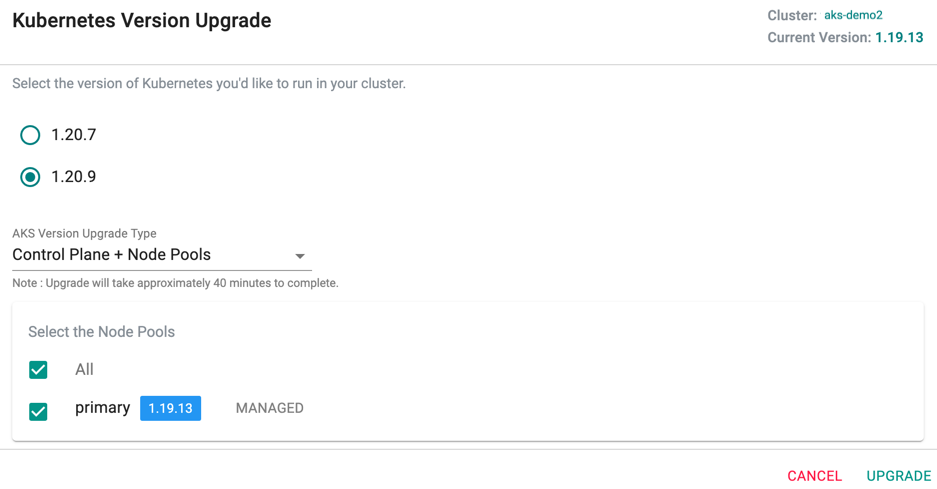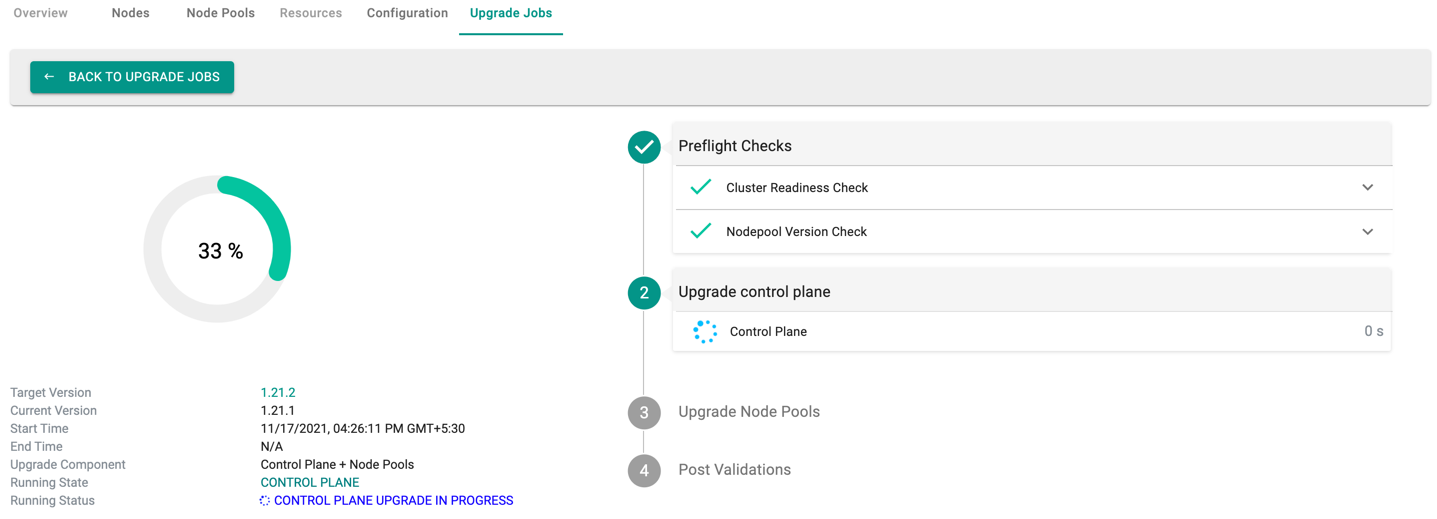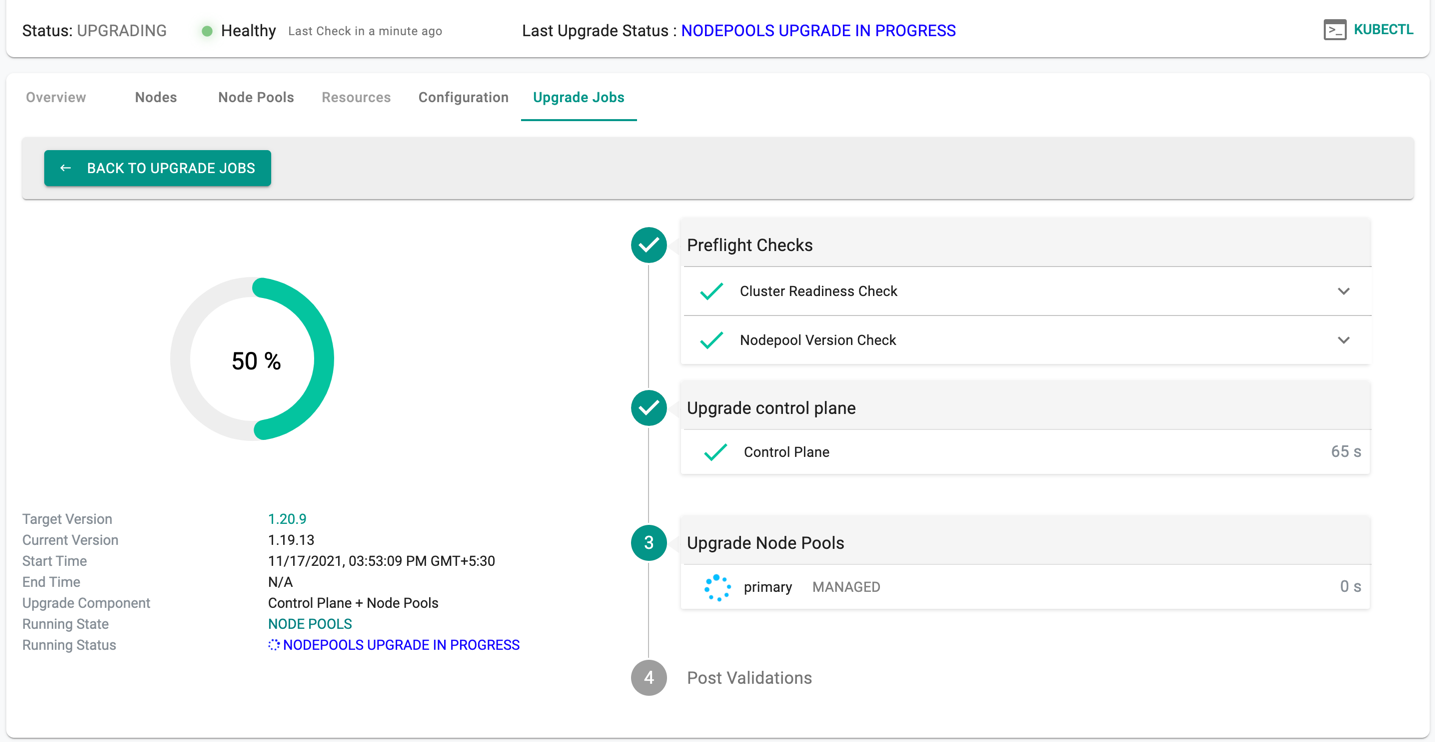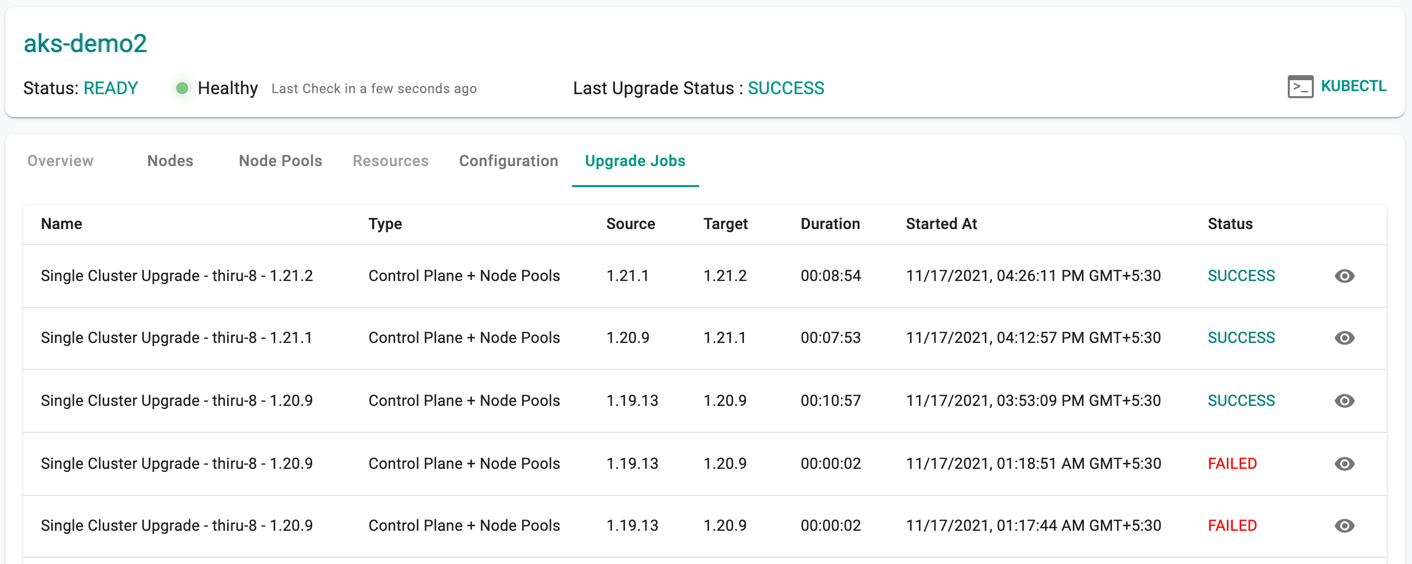K8s Upgrades
Performing upgrades of Amazon AKS Clusters is supported in the Controller
In Place Upgrades Notification¶
The administrator is shown a notification when an upgrade is available for a cluster. Clicking on the notification will provide the administrator with additional information on what is available.
- A red banner appearing as Upgrade Available indicates that the cluster is multiple version(s) behind the latest version
- A blue banner appearing as Upgrade Available indicates that the cluster is one version behind the latest version
- A blue banner appearing as Upgrade Nodepools indicates that the Nodepool is one or multiple version(s) behind the current control plane's version

Upgrade Note
-
In version 1.27, AKS clusters will have KMS v2 configured by default when KMS is enabled. Customers with clusters on v1.26 and below, with KMS enabled, will not be able to upgrade to v1.27 if clusters have the v1 version of KMS running. Attempting to upgrade to 1.27 with the v1 version of KMS will result in a failure at the preflight check stage. Please follow the steps outlined in this documentation for migrating from KMS v1 to v2, and then proceed with upgrading the cluster to version v1.27.
-
In version 1.25, Pod Security Policies (PSPs) have been removed. Therefore, if a cluster has any detected PSPs, the update to version 1.25 will be prevented for AKS clusters.
Scope of Upgrade¶
Two components need to be upgraded during an AKS Cluster upgrade
- AKS Control Plane
- Attached Node Groups (both Managed and Self Managed)
The Control plane always needs to be upgraded first before the node groups
Important
AKS Cluster upgrades performed by the controller are always performed in a manner where the cluster and resident workloads never encounter any downtime
Upgrade Everything¶
This is the default option. When selected, it upgrades everything to the new version of k8s i.e.
- AKS Control Plane
- All Node Pools (Both Managed and Self Managed)

Tip
Upgrading the entire AKS cluster can take ~15 minutes.
During the upgrade, an indication is provided to administrators on the main cluster list page. An illustrative example is shown below.

Preflight Checks¶
A number of preflight checks are first performed before the upgrade is attempted
Upgrade AKS Control Plane¶
The AKS control plane is upgraded next. This can be a time-consuming step

Upgrade Node Pools¶
Node Pools are then upgraded to the selected version of k8s. Shown below is an example of an AKS Cluster's Upgrading Node pools progress

Post Upgrade Validations¶
Once upgrade is complete, a round of post-upgrade tests are performed to ensure that there are no loose ends and everything is as expected
Nodepool Provision complete¶
Once the Nodepool provision is complete, the status is shown in the Node Pools screen as Nodepool Provision Complete

Control Plane Only Upgrade¶
Users can select Control Plane Only for upgrade. The attached node groups are left untouched. The administrators are allowed to upgrade the node groups individually one by one when required

Node Pool Upgrade¶
This option is displayed to the administrator only if the controller detects that the node group is behind the AKS Control Plane from a Kubernetes version perspective.
- Click the cluster name and select Node Pools tab
- Click on upgrade notification for available node groups

- Select Upgrade to latest Image and click Upgrade Node Pool

Delete Node Pool¶
Utilize the Delete icon to removed the deployed node pool(s) within an AKS cluster.

Upgrade History¶
The Controller maintains the upgrade history associated with every upgrade action whether it was successful or not. Administrators can view the entire history through the following steps
- Click the Cluster name and select Upgrade Jobs
This will display the entire history of upgrades for that specific cluster

Upgrade Details¶
To view the detailed information of an upgrade, click the eye icon of that specific row. An illustrative example is shown below
